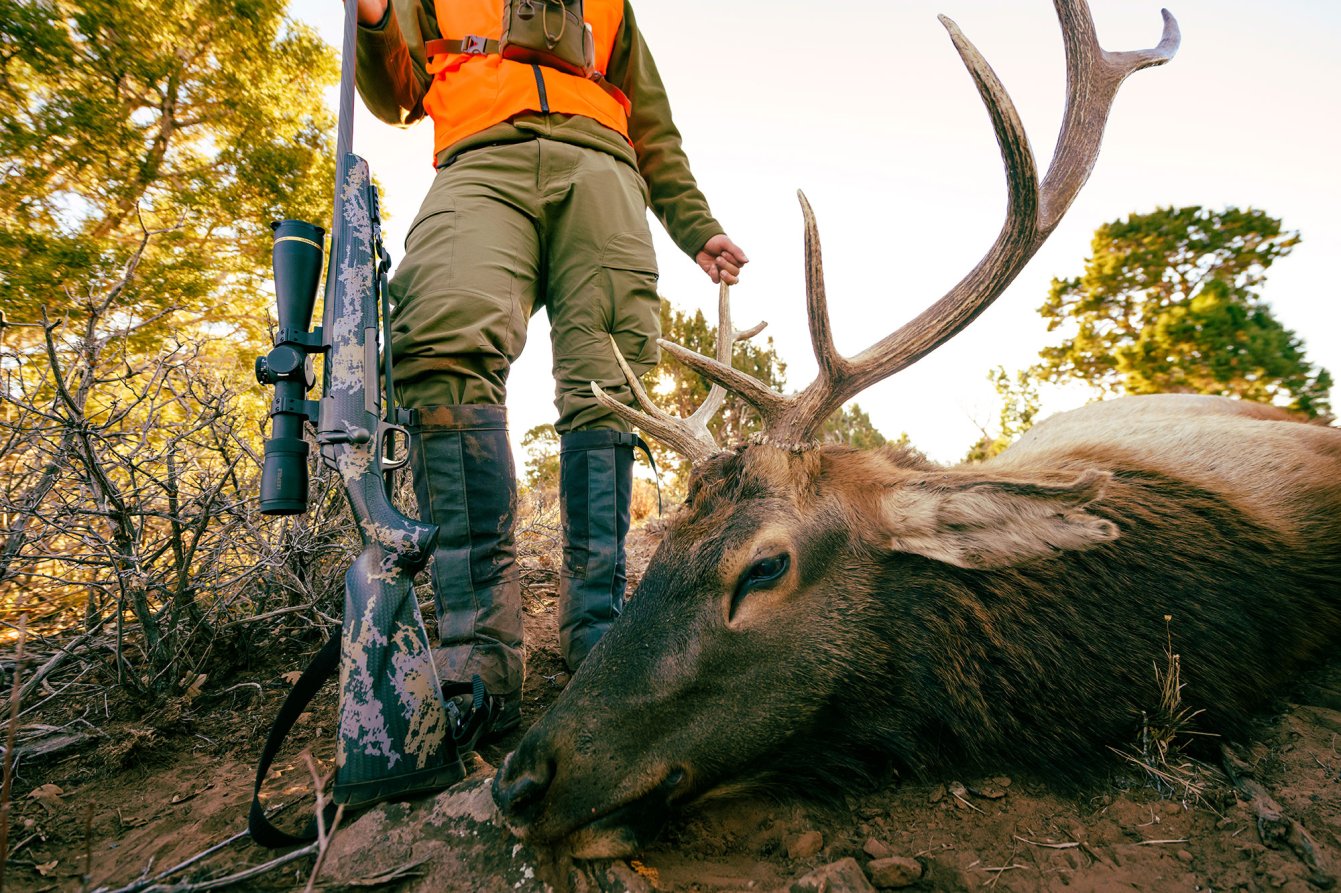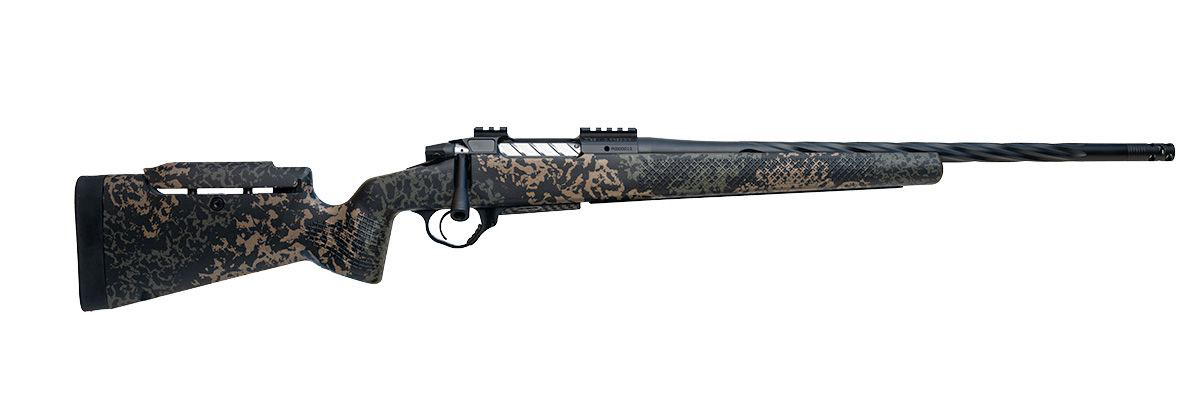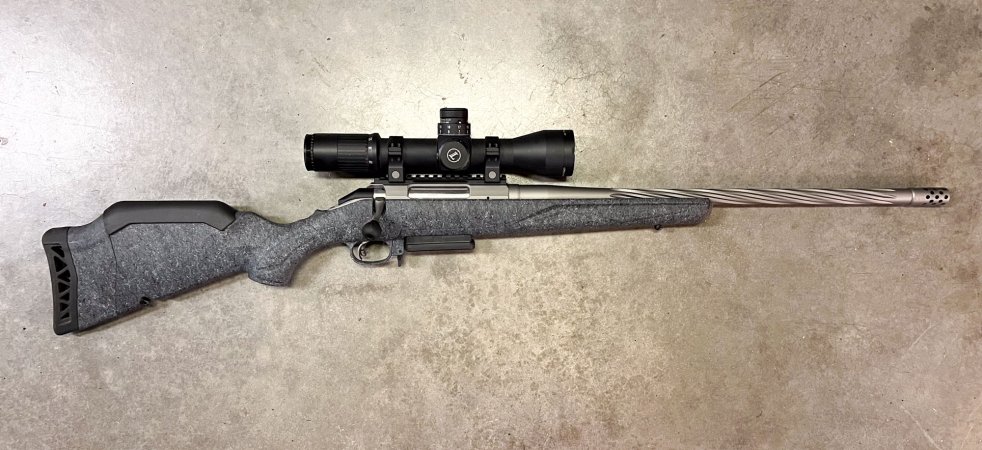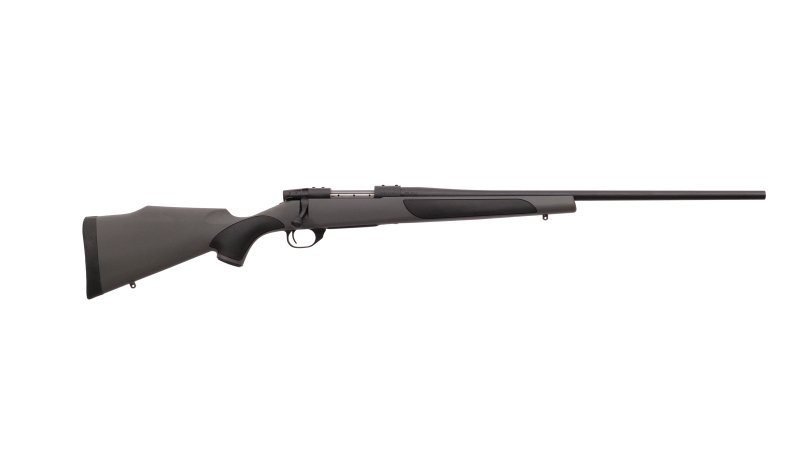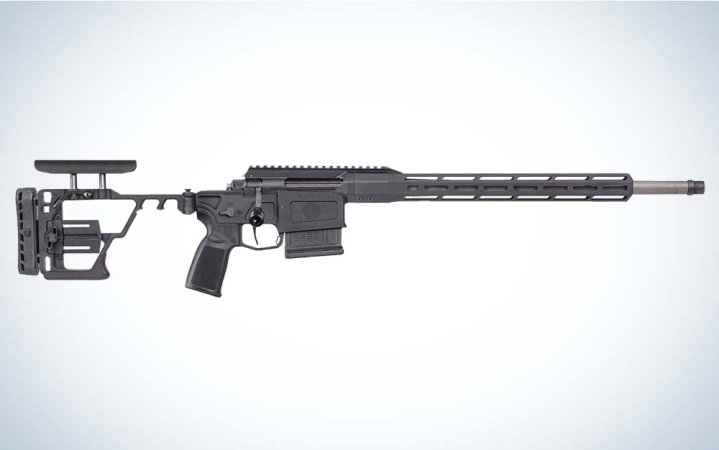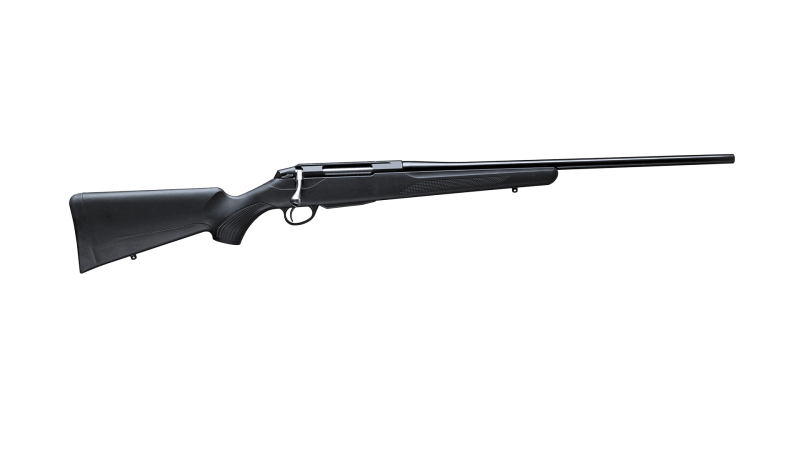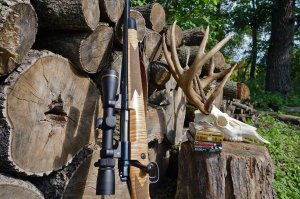We may earn revenue from the products available on this page and participate in affiliate programs. Learn More ›
Elk are big, tough animals and any elk hunting rifle you select needs to be chosen with that fact in mind. When it comes to the best cartridges for elk, the .30-calibers still rule the roost, but there are plenty of good elk rifles chambered in smaller offerings. The magnum guys talk up the ability of the big boomers to handle less-than-ideal shot angles, while the smaller-caliber camp points to the better precision and recoil management that lighter cartridges offer. Both sides have merit.
The other factor when picking an elk rifle is the country where you hunt and your style of hunting. Backcountry hunters on foot will gravitate toward light rifles, while those on horseback or who hunt private ground will have a broader field to choose from. While I admire ultra-light rifles, there’s something to be said for a gun with adequate heft. They tend to be more accurate and handle better than the sub-6-pound guns. If you need to cut weight for your hunt, you’re better off giving up the Doritos and IPAs than trying to shave every last ounce from your rifle’s barrel.
No matter what, however, elk rifles need to be tough, because they will be banged around and exposed to the elements. This list of the best elk hunting rifles covers the gamut of price points and cartridge selection, so no matter the specifics of your next hunt, you’ll find one of these elk rifles answers.
- Browning X-Bolt Speed in 6.8 Western
- Seekins Havak PH3 in 300 PRC
- Ruger American Gen II in .308 Win.
- Proof Research Elevation in 7mm PRC
- Weatherby Vanguard in .300 Wby.
- Sig Cross in 6.5 CM
- Mossberg Patriot in 7mm Rem. Mag.
- Tikka T3x Lite in .270 Win.
- Winchester Model 70 in 6.5 PRC
How I Picked the Best Elk Hunting Rifles
I’ve gone on countless elk hunts over the years. I’ve chased them in the high desert regions of New Mexico, in the coastal rainforests of the Cascade mountains, on horseback in the Canadian Rockies, and all over the intermountain West. I came up with this list of the best elk rifles—and cartridges—based on those experiences. I wanted to highlight what’s worked for me, as well as showcase rifles that are currently available.
Best Elk Hunting Rifles: Reviews and Recommendations
Browning X-Bolt Speed in 6.8 Western
Browning has been adding variants to their X-Bolt line at a good clip, and this is one my favorites to date. The X-Bolt Speed features a carbon-fiber stock that’s been filled with lightweight foam so it is both light and quiet. That combined with the fluting on the bolt body and barrel brings the weight of the Mountain Pro down to 6 pounds, 2 ounces.
Chambered in 6.8 Western, this rig is ready for high country bulls. The 6.8 Western is a fairly stout cartridge, similar to the .270 WSM, but better engineered to take advantage of heavy-for-caliber .277-inch bullets with high BCs. Typical bullet weights are 165, 170, and 175 grains at between 2,835 to 2,970 fps.
To tame the cartridge, the Speed comes with an effective muzzle brake. Like other X-Bolts, the rifle’s ergonomics are excellent. The three-round magazine loads easily and feeds without any fuss. The tang-mounted safety is easy to manipulate. And the rifle’s 60-degree bolt throw makes for snappy follow-up shots.
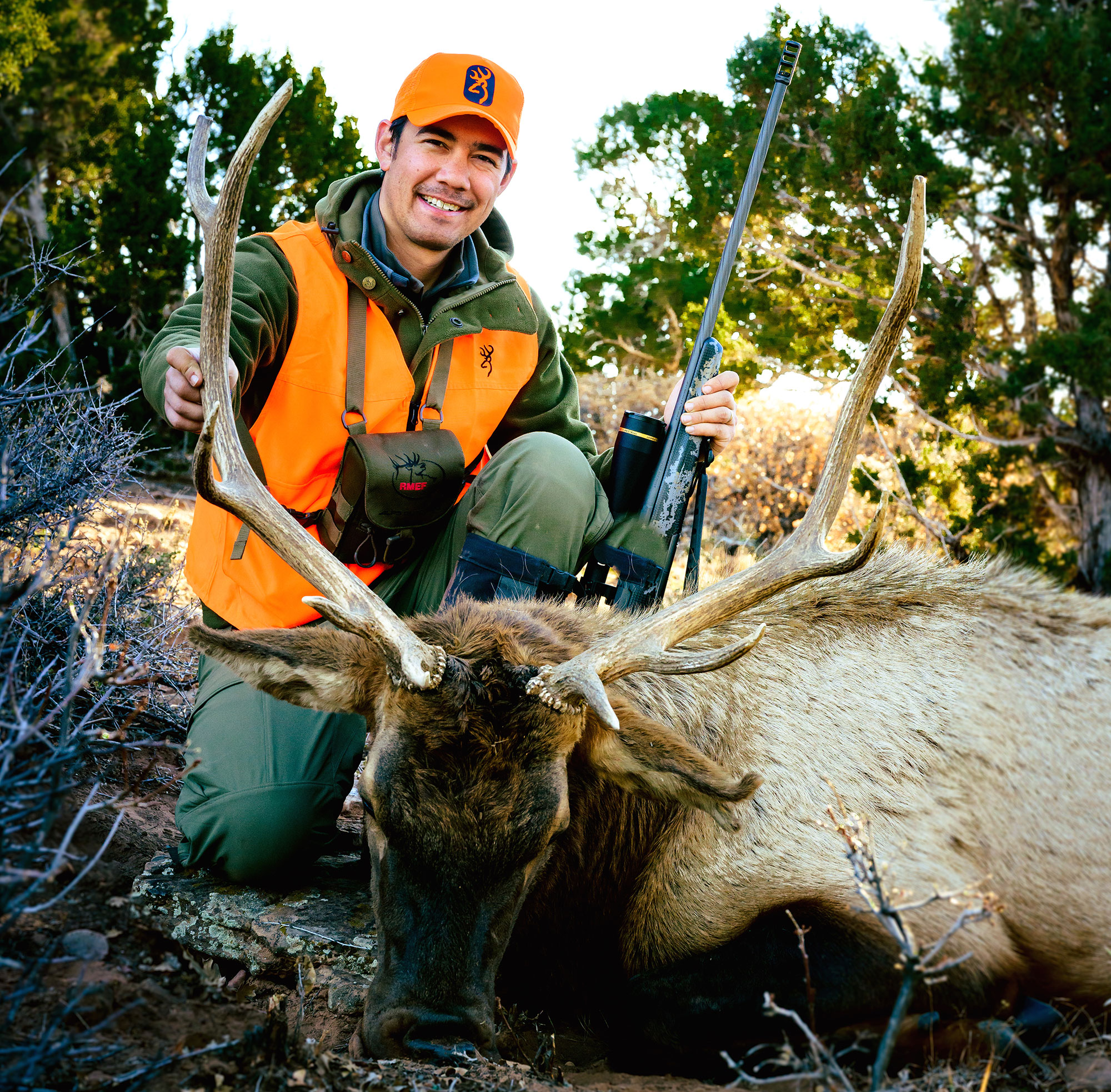
Seekins Havak PH3 in 300 PRC
The Seekins Precision Havak Pro Hunter 3 is one of the best values in a lightweight technical elk rifle. Glen Seekins, the brainchild behind this rifle, is an avid mountain hunter and precision shooter and the Havak PH3 is a great synthesis of those two passions.
The PH3 follows on the heels of the award-winning PH2 series and is build around a new three-lug action that is very smooth to cock and run.
Other features include a quick-change barrel system, toolless bolt takedown, integral 20 MOA Picatinny rail, adjustable cheek piece, and an integrated M-Lok rail that runs the length of the fore-end.
It includes attractive visual touches like the elegantly fluted barrel, grooved and machined flat in the bolt, and well-executed splatter camo paint on the carbon-fiber stock.
As with the PH2, the grip angle on this model is nearly vertical and it has a significant palm swell which fills the hand. The waffle-pattern cross hatching on the grip and fore-end gives a secure purchase, and the fore-end itself is fairly broad with a flat bottom. This stock design allows the rifle to be shot well from both supported and unsupported positions in the field. If banging away with a lightweight 300 PRC isn’t your thing, the rifle can also be had in 6.5 Creedmoor, 277 Fury, and 6mm Creedmoor.
Ruger American Gen II in .308 Win.
This budget-friendly rifle is another great option for elk. The Gen II replaces the original Ruger American with a number of internal and cosmetic upgrades. These include the addition of a modular stock that can be adjusted for various dimensions, and ambidextrous three-position safety and better aesthetics.
I’ve carried this rifle in the rugged West Texas country around Marathon, a spot where elk range freely in abundance and it is equal to the hard use that kind of hunting entails.
My rifle is chambered in 6.5 Creedmoor, but for those that like their elk rifles to be chambered in a .30, the .308 Win. is a good option.
As with the original Ruger American it had dual-cocking cams on the bolt, which is one of the reasons the 3-lug action runs so smoothly. The two cams distribute the effort of the 70-degree bolt lift making for a smoother ride. The American Gen II’s full-diameter bolt body also helps in this effort. The integral bedding block is another clever feature that creates a solid support for the action and contributes to the American’s fine accuracy.
The trigger is user adjustable and can be set to break at about 3 to 5 pounds. The tang safety is easy to manipulate and slides between the three positions in a positive fashion. On “safe” the rifle’s bolt is locked in place, in the middle position the rifle is still safe but the bolt can be opened to unload or check the chamber, and on “fire” it is ready to go.
It comes with a Picatinny rail that runs the length of the action making the mounting of an optic a simple affair. Unscoped the rifle weighs about 6.5 pounds, plenty light for rigorous hunts.
For an in-depth look at the rifle, see my review.
Proof Research Elevation in 7mm PRC
In addition to making the world’s best carbon-fiber barrels, Proof Research also cranks out outstanding complete rifles. The attention to detail and fit-and-finish of both their barrels and rifles has no equal among factory produced firearms.
Located in northwest Montana, it’s little surprise that Proof has a good feel for what constitutes a great elk hunting rifle, and they have several options worth considering, depending on your budget.
The most attainable is the Proof Elevation, which has a feature-set that justifies the three-grand-and-change price. It’s built on a Zermatt Arms Origin action, which is one of the best-made bolt-actions out there. The manufacturing tolerances on Zermatt’s products are ultra precise, to the point where companies doing builds on their actions don’t even need to do QC checks on the dimensions. When mated with Proof’s carbon-fiber barrel and placed in Proof’s carbon-fiber stock, you end up with a tight, stiff, and reliable hunting rig that stacks bullets on top of each other.
In 7mm PRC the Elevation comes with a 22-inch barrel with a 1:8 twist and 5/8-24 threaded muzzle, and weighs about 6.5 pounds without a scope. It has a hinged-floorplate magazine, rocks dual swivel studs on the fore-end to mount a bipod, has a TriggerTech trigger, and is available in a couple different color options.
The 7mm PRC is a relative newcomer but has caught on in a major way with big-game hunters and long-range shooters, especially those out West. It is inherently accurate and strikes a great balance between the popular 6.5s and the heavy-recoiling .30-cals.
I’ve shot and hunted with it extensively and it is about as perfect an elk cartridge as you’ll find.
Weatherby Vanguard in .300 Wby.
The Weatherby Vanguard strikes a great balance between performance and value and is one of the best elk hunting rifles you can buy for under $500. The Obsidian model has a black synthetic stock with a Monte Carlo cheekpiece and is mated to matte blued steel action.
Vanguards come chambered in a wide variety of cartridges including the iconic .300 Weatherby Magnum, which is the most popular of Roy Weatherby’s creations. The belted magnum, based on the .300 H&H, with its signature double radius shoulder has been dropping big game since it was introduced in 1944.
To leverage the powder capacity of the cartridge, this Vanguard comes with a 24-inch barrel. The hinged floorplate magazine holds three rounds and as with all Vanguard rifles, it comes with a 3-shot sub-MOA accuracy guarantee.
It is also available in other capable elk cartridges like the 7mm Rem. Mag., 7mm PRC, 300 PRC, and 300 Win. Mag.
The stock on the Vanguard is well designed, with textured panels on the grip and fore-end for a secure purchase in wet and slippery conditions. The grip also has a slight palm swell on the right side, which fills the trigger hand nicely. Another feature I like is the three-position safety, which allows the bolt to be opened without putting the rifle in “fire” condition.
Sig Cross in 6.5 CM
This handy rifle is a high-country elk-killing machine. With the stock folded, it stows away easily in a pack for maximum portability and comfort, making it a great choice for hauling into the mountains, especially since the bare rifle only weighs 6.8 pounds.
I let a good friend of mine “borrow” my Sig Cross in 6.5 Creedmoor, and he’s proceeded to kill six elk with it in the past few years. He’s made it clear that I won’t be getting the rifle back any time soon. But that’s nothing compared to another friend of mine who hunts and guides for elk. His Sig Cross has accounted for 18 bulls over the last three seasons, one-shot kills all.
One thing the Sig Cross has going for it is outstanding accuracy. When I got mine, I was amazed at the bug hole groups it churned out, which is remarkable for a light rifle and a chassis folder to boot.
But Sig got it right with the Cross, and if you don’t mind the rifle’s tactical aesthetic it is a hell of a choice. Sig also offers the rifle in .308 Win. and in the .277 Fury. The .277 Fury is an intriguing option, though ammo availability is an issue. The .277 Fury is a .308-sized cartridge that develops impressive muzzle velocities. The cartridge case has been modified to handle higher chamber pressures and is capable of driving a 140-grain Sierra Gameking at 2,950 fps.
Mossberg Patriot in 7mm Rem. Mag.
The Mossberg Patriot is an everyman’s elk rifle, a fully capable hunting tool at a bargain price. I’ve hunted with Mossberg Patriots from Alaska to Mexico and have had nothing but positive experiences with the platform.
The rifle’s accuracy has been good, in my experience, including with the heavy hitting .375 Ruger I took on a couple Alaska bear hunts. I would expect the same from the 7mm Rem. Mag., which is one of the all-time great big game cartridges.
As you might suspect, the Patriot is available in other chamberings as well, from short-action rounds like the .308 Win. and 6.5 PRC to long-action rounds like the 7mm PRC, .270 Win. and .30/06.
The Patriot comes with a detachable box magazine that is simple and fool proof. All rifles in the series sport Mossberg’s user-adjustable LBA trigger, which can be set from 2 to 7 pounds, though why anyone would set the trigger above 3 pounds is beyond me.
In 7mm Rem. Mag. the rifle has a threaded 24-inch barrel and comes with Weaver style bases installed.
Though the Patriot lacks some of the refinements found on the more expensive rifles in this list, it still manages to be attractive, reliable, accurate, and rugged—all at one of the most competitive price points you’ll find.
Tikka T3x Lite in .270 Win.
It doesn’t take much for a hunter to fall under the sway of Tikka rifles. These Finnish bolt actions have a well-earned reputation for their accuracy, reliability, and smart ergonomics. And among the best elk rifles they stand out for their budget-friendly price.
Tikka has at least 17 different models in their T3x line, several of which would make a fine elk rifle. Recently OL gear editor Scott Einsmann chased elk in British Columbia with T3x Lite (in .300 Win. Mag. and was absolutely smitten with the rifle’s performance.
The three-lug action on the T3x series is smooth and easy to run. Cartridges feed flawlessly from the T3x’s excellent detachable box magazine. The magazine is rugged, easy to load, and can be inserted and removed without hassle even when wearing gloves.
Among old-school hunters, the .270 Win. is considered light as an elk cartridge, but with the broad selection of premium hunting bullets available, it is more than up to the task. Nosler’s 150-grain Accubond Long Range, and Barnes’ 140-grain TSX BT are both excellent options.
If you want more oomph, the Tikka T3x Lite comes in .300 Win. Mag., .30/06, .308 Win. and others as well.
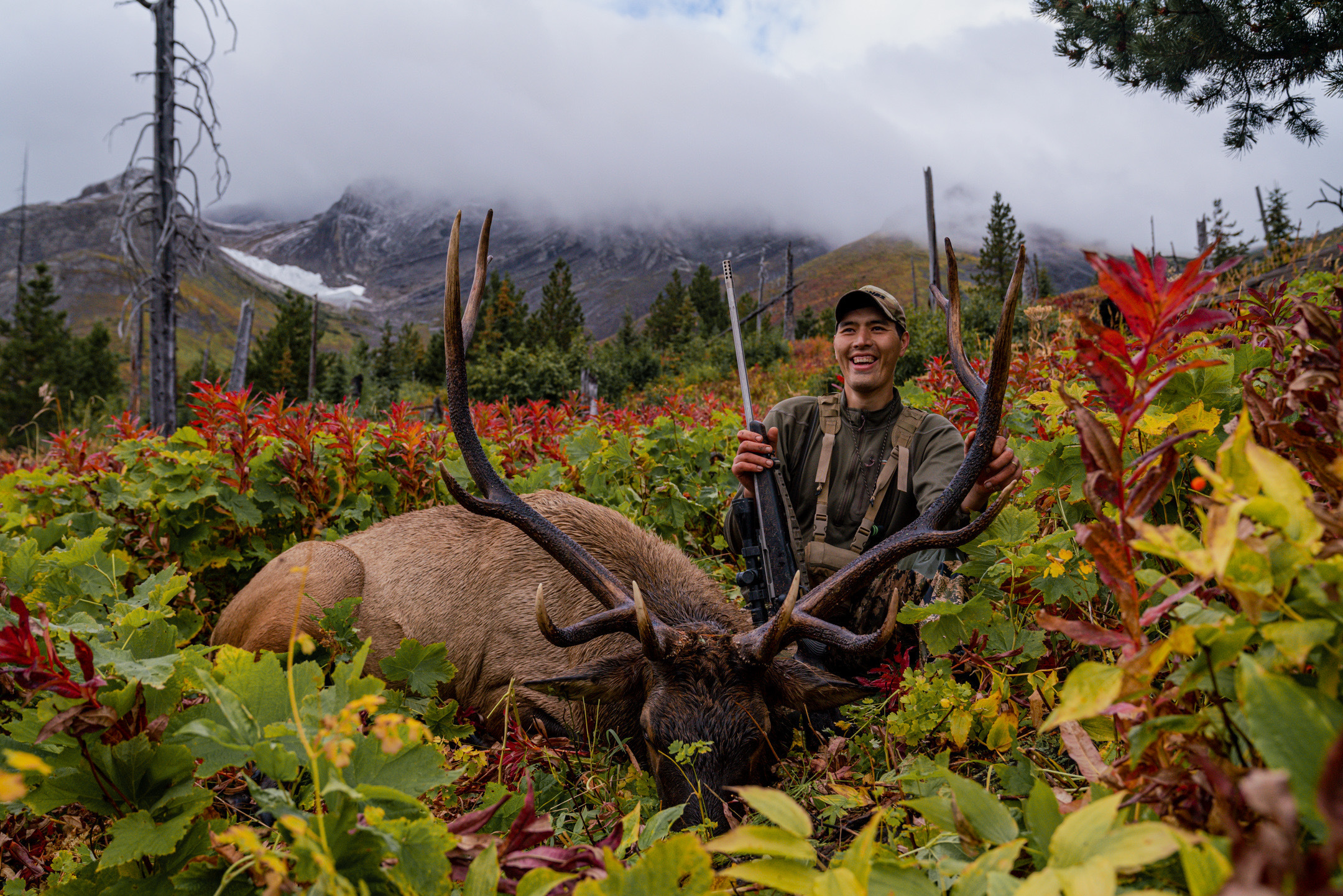
Winchester Model 70 in 6.5 PRC
For the traditionalist who doesn’t mind a dash of modernity, this is one of the best elk rifle and cartridge combinations available. Today’s Model 70s are built to a level of quality better than anything Winchester has done in decades and are worthy heirs to the M70’s legend.
While you can still get a Model 70 in walnut with blued steel, there are other options that are better suited to hard use and serious hunting. The Extreme Weather has a stout synthetic stock and stainless metalwork. That said, no one will judge you if you throw down for a Super Grade with its high-gloss finish and ebony-tipped fore-end.
These rifles typically have hinged-floorplate magazines and can accommodate three rounds in cartridges like the 6.5 PRC and .300 Win. Mag.
These rifles have Winchester’s consistent and crisp MOA trigger, a three-position safety located on the bolt shroud, controlled-round feed and extraction, and an effective recoil pad.
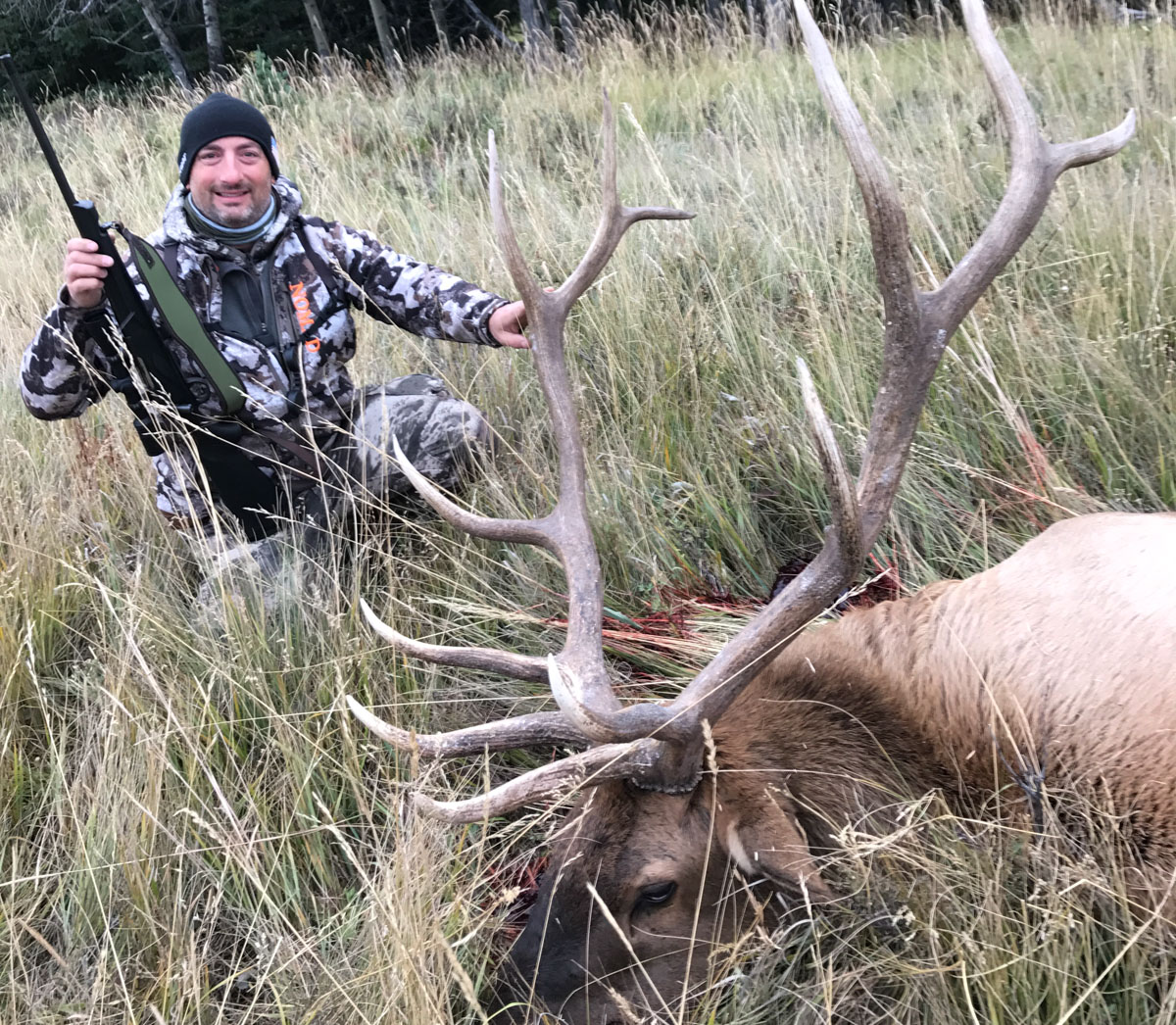
FAQs
The sweet spot for an elk rifle is somewhere between six and eight pounds without a scope. You can go a bit lighter if you are doing a dedicated backcountry hunt on foot with lots of vertical, but just know that ultralight rifles in hard-kicking calibers don’t shoot as well as a more balanced rig. You can go a bit heavier than 8 pounds if you like, but that’s a pretty good cap as the majority of elk hunts involve climbing and rough terrain, and keeping your rifle’s weight to reasonable limit will preserve your legs and lungs.
This is one of the most contentious questions among hunters. The answer is, no, the 6.5 Creedmoor is not too small for elk. I’ve shot several bulls with the 6.5 Creedmoor and know of dozens of others that have been taken cleanly with the cartridge. Its track record on big animals is too clear to ignore. That said, there are plenty of folks who don’t believe it is up to snuff, and fortunately for them there are plenty of larger cartridges to choose from.
I wouldn’t hesitate to bring any of the elk rifles listed here on a backcountry hunt. You certainly get more gun with more money, but in terms of basic reliability, all these rifles are good choices. For the bargain-price rifle, I’m fond of the Mossberg Patriot. In the mid-range prices, the Weatherby Vanguard and Tikka T3x are two rifles I have a lot of confidence in. At the upper end of the price scale, the Seekins PH3 and Proof Research Elevation are tough to beat.
Final Thoughts
What qualifies as a great elk rifle has shifted over the years. Advances in bullet technology, cartridge design, rifle accuracy, and shooting skills have broadened the spectrum. Fifty or 60 years ago we compensated for lousy bullets, mediocre rifle performance, and general lack of shooting savvy by insisting that best elk hunting rifles should be fire-spewing magnums, .30-caliber and up. Anything less would be foolhardy. We now know better—at least most of us do. The classic boomers still bring home the venison, but we live in an era where plenty of rifles, and cartridges, are legitimate tools for hunting elk.
